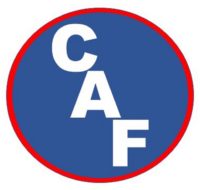NOTE – This site is dedicated to the promotion of the use of Class A Foam ( NAF & CAF) for the extinguishment of Class A fuels. All other concentrate types are listed on the site soley for the purpose of edification to assist fire personnel in making sound decisions in their respective fire operations.
First discovered by accident in the late 1970’s during an aerial delivery test of a wetting agent. The new formula just happened to develop a frothy, bubbly blanket. And then – Class A Foam was born.
What is A-Foam? A-Foam is foam concentrate formulated for use on Class A Ordinary Combustible Fuel Fires.

A-Foam concentrate is an anionic surfactant detergent designed for Class A Ordinary Combustibles to be carbon loving, reduce water surface tension, and generate bubbles (increase surface area – STMR) for enhanced heat absorption.
- Reduces Surface Tension – The water drops fall apart, spread out and soak in and wet fuels faster – thus making the fuels too wet to burn. This rapid wetting also aids in the reduction of the water required and aids in reducing $ loss to water damage.
- Makes water stick to Carbon (Carbon Loving). Ordinary combustibles are mostly carbon. Water (H2O) by itself has no molecular way to cling to carbon. A-Foam concentrate makes the water carbon loving so it clings to ordinary combustible fuels. The opague part of smoke is mostly carbon. Instead of reducing visibility or polluting the air, the carbon attaches to the Class A Foam. The increased visibility makes structure fire rescue faster, and can eliminate firefighters from becoming lost and disorientated (a common fatality issue) thus making the use of Class A Foam an important SAFETY component.
- When added to air and agitated, Class A Foam increases the surface area of the water (as compared to drops) that is exposed to the heat – changing the drops to bubbles. This allows the water to absorb heat to its near perfect absorption capability resulting in very rapid fire knockdown. Just the increased surface area of the water provides drastically increased firefighter SAFETY (rapidly reducing heat exposure) and also aids in the reduced water needed as well as for the decrease in $ loss due to water damage. Combined with the increased visibility, the rapid heat reduction also aids in the protection and rapid discovery of trapped victims.

Most quality A Foam concentrates are and always have been “Green”. All the changes in the “Banned Flourinated” concentrates have had no design affect on the Class A Foam concentrate market.
The surfactants in Class A Foam are synthetic hydrocarbon surfactants and are found in many comsummable products.
The top of the surfactant molecule is attracted to carbon but repels the water. This keeps the carbon loving part high on the surface. The bottom part of the molecule is the opposite which keeps the surfactant molecule attracted to the water. Th surfactant molecule at the surface reduces the water Surface Tension causing the water to spread out.
So now we have a carbon loving, low surface tension, bubbling agent – perfect for extinguishing Class A ordinary combustible fuel fires by cooling, smothering & wetting the fuels.
There are no specific performance standards for Class A Foam other than “Put the Fire Out” and cause “No Environmental Damage”. Therefore, there is no specific 3rd party testing for foam effectiveness or chemical makeup. The USDA-USFS does test for concentrate environmental safety (See QPL).
So, how do we tell which Class A Foam Concentrate is BEST? A little research!!!
- If it is listed on the QPL – if not, pick a brand that is listed!!
- Read and analize the SDS!!
- Conduct DIY Performance Evaluations!!
- Ensure that the product meets the approval of the AHJ, including listing on the QPL!!
If the Class A concentrate does all the things listed above (only DIY Performance Eval will tell) and is listed on the USDA-USFS QPL – You have a winner.
NOTE: There are several great brands of Class A Concentrate available. There are also several less than desirable brands on the market. DO THE RESEARCH!!!!
Class A Foam is generally applied between .1 – 1%. Proportioning above 1% causes a thicker viscosity that adds no additional benefit and wastes concentrate.
Class A Foam is useful for Solution, NAF and CAF applications. Depending on the application, Class A Foam can make small, strong consistant bubbles (CAF) as well as big and varied bubbles (NAF).
Class A Foam application rates via a fog nozzle (1% Solution) are the same as straight water – calculated via pre-planning or rapid on-scene fast math. Do not reduce the flow when applying the foam. Water is saved when the fire goes out faster.
Some Class A foams have very long shelf lives. Check with the manufacturer of your chosen product.
Freezing – Thawed out Class A foam concentrates have shown no detriment in bubble production.





































